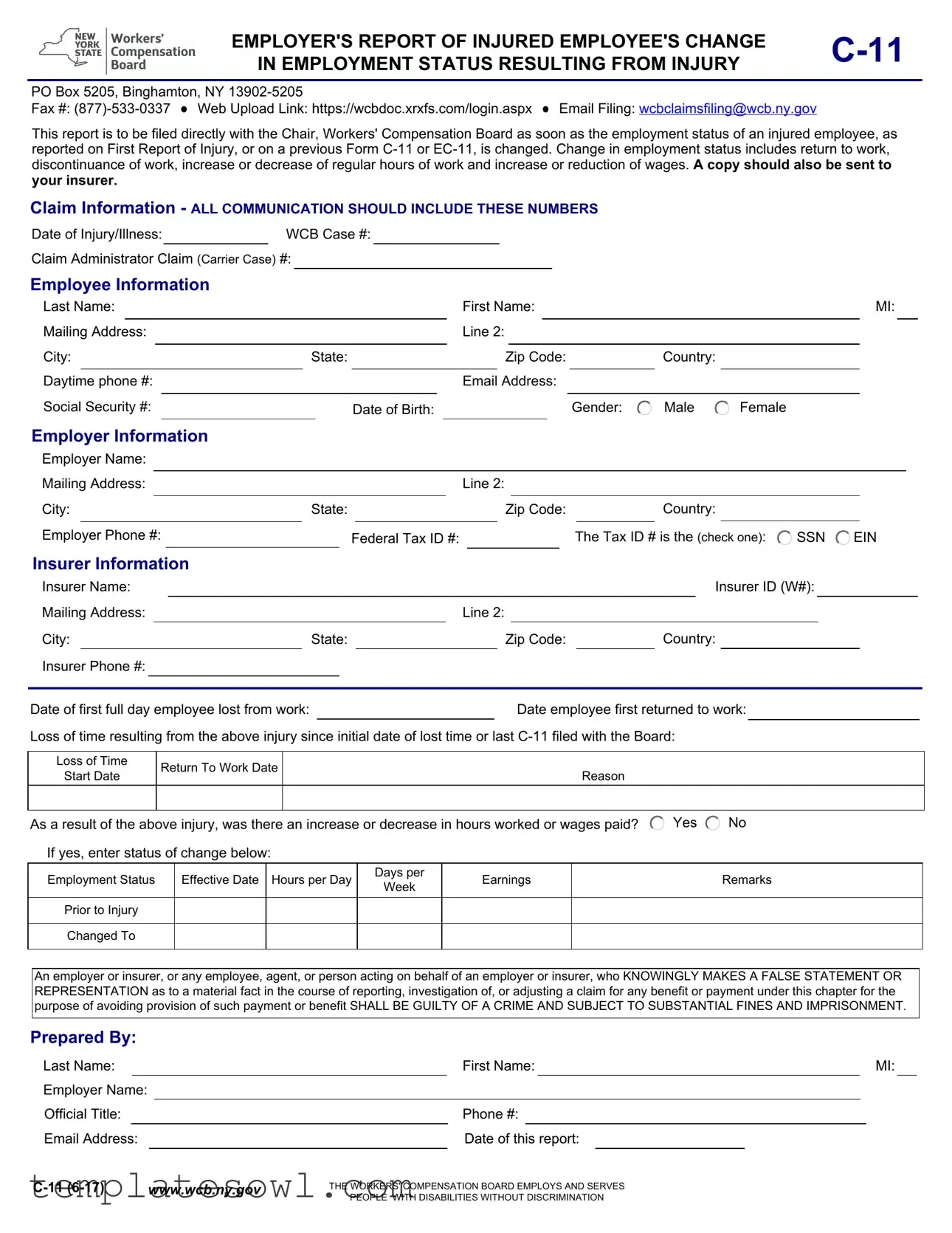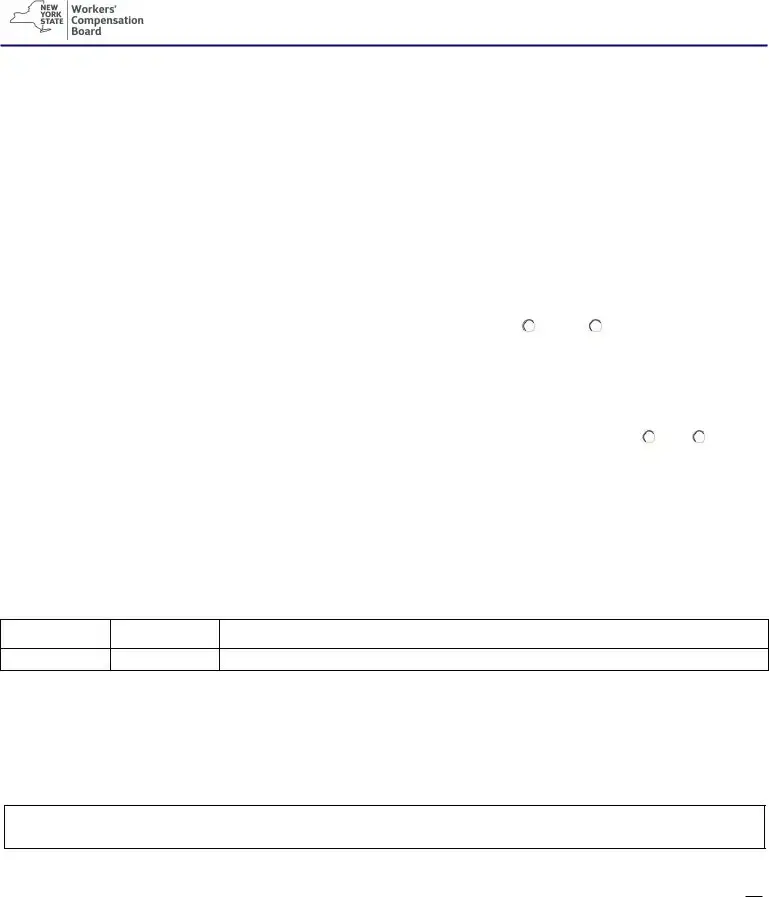What is the C-11 form and why is it important?
The C-11 form is an official report used by employers to inform the New York Workers' Compensation Board about changes in the employment status of an employee who has been injured. Its purpose is to provide up-to-date information regarding the working situation of the injured employee, including whether they have returned to work, discontinued work, or experienced changes in their hours or wages. Filing this report promptly helps ensure that the employee's benefits are adjusted accordingly and maintains compliance with legal requirements.
When should the C-11 form be filed?
The C-11 form should be filed as soon as there is a change in an injured employee's employment status. This includes situations where the employee returns to work, stops working, or experiences changes in their regular hours or rate of pay. Reporting these changes promptly is crucial for aligning benefits with the current employment situation and avoiding potential penalties for delayed reporting.
How can the C-11 form be submitted?
The C-11 form can be submitted in several ways: via mail to the Workers' Compensation Board at the provided address, by fax at the specified number, through email, or through their web upload system. Sending a copy directly to the employee’s insurer is also recommended to ensure that all parties involved are notified of the status change.
What information is required on the C-11 form?
To complete the C-11 form, you will need to provide specific information including the employee's full name, mailing address, and contact details, as well as the employer's identification information. Essential dates such as the date of injury, the date the employee lost and returned to work, and the amount of time lost due to the injury are necessary. Additionally, details regarding any changes in hours or wages must be reported.
What happens if the C-11 form is not filed?
Failing to file the C-11 form in a timely manner may result in complications for both the employer and the injured employee. This delay could lead to incorrect benefit payments or a backlog in claims processing. Furthermore, employers who neglect to report employment status changes could face penalties, including fines, due to non-compliance with required reporting laws.
Is there a penalty for providing false information on the C-11 form?
Yes, knowingly providing false information on the C-11 form can have serious consequences. If an employer, insurer, or any representative intentionally submits incorrect information to modify a claim, they may be guilty of a crime. This could result in substantial fines and potential imprisonment. Therefore, it is vital to ensure that all information reported on the form is accurate and truthful.
Who should fill out the C-11 form?
The C-11 form should be completed by the employer or an authorized representative. This could include the human resources department, a supervisor familiar with the employee's status, or an insurance claims administrator. Accuracy is key, so it is advised that the person filling out the form has a thorough understanding of the employee’s injury details and employment changes.


 Yes
Yes  No If yes, enter status of change below:
No If yes, enter status of change below: